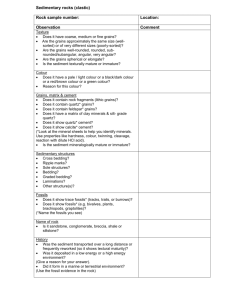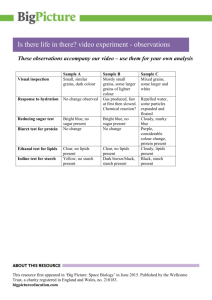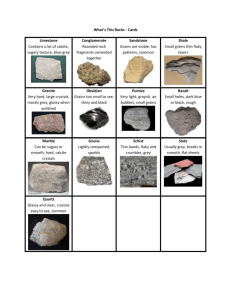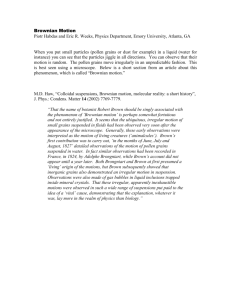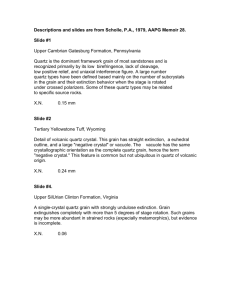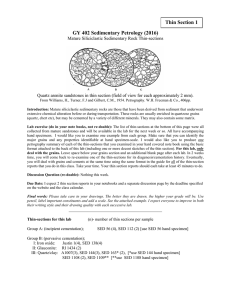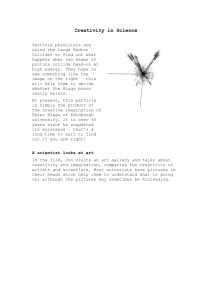Scientific abstract
advertisement
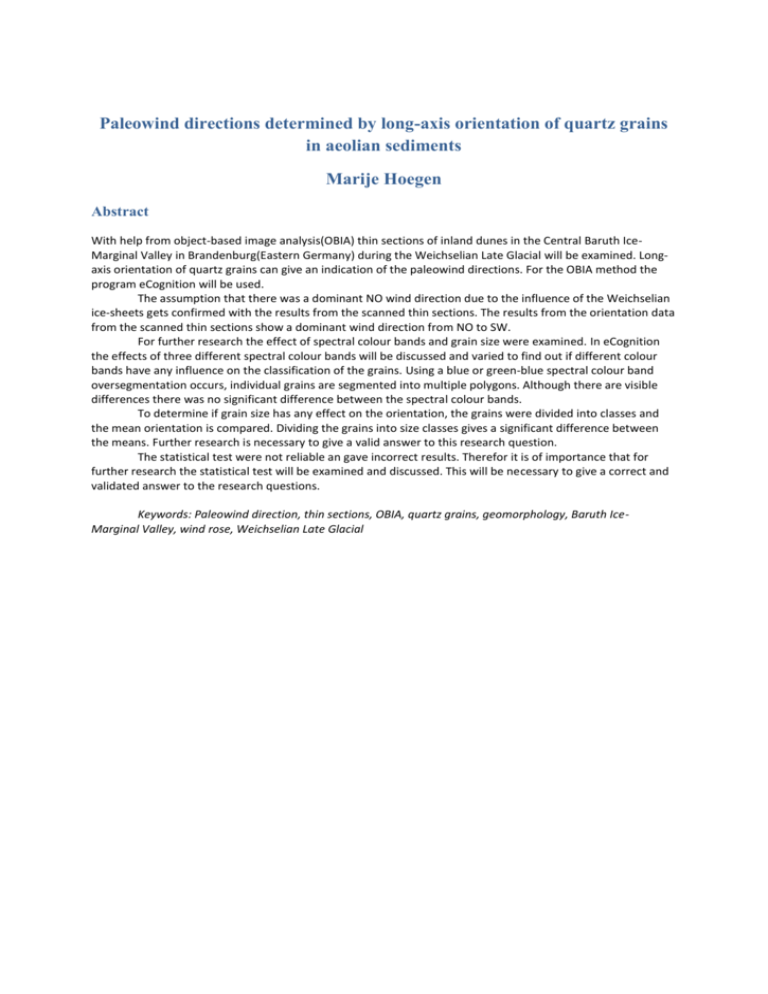
Paleowind directions determined by long-axis orientation of quartz grains in aeolian sediments Marije Hoegen Abstract With help from object-based image analysis(OBIA) thin sections of inland dunes in the Central Baruth IceMarginal Valley in Brandenburg(Eastern Germany) during the Weichselian Late Glacial will be examined. Longaxis orientation of quartz grains can give an indication of the paleowind directions. For the OBIA method the program eCognition will be used. The assumption that there was a dominant NO wind direction due to the influence of the Weichselian ice-sheets gets confirmed with the results from the scanned thin sections. The results from the orientation data from the scanned thin sections show a dominant wind direction from NO to SW. For further research the effect of spectral colour bands and grain size were examined. In eCognition the effects of three different spectral colour bands will be discussed and varied to find out if different colour bands have any influence on the classification of the grains. Using a blue or green-blue spectral colour band oversegmentation occurs, individual grains are segmented into multiple polygons. Although there are visible differences there was no significant difference between the spectral colour bands. To determine if grain size has any effect on the orientation, the grains were divided into classes and the mean orientation is compared. Dividing the grains into size classes gives a significant difference between the means. Further research is necessary to give a valid answer to this research question. The statistical test were not reliable an gave incorrect results. Therefor it is of importance that for further research the statistical test will be examined and discussed. This will be necessary to give a correct and validated answer to the research questions. Keywords: Paleowind direction, thin sections, OBIA, quartz grains, geomorphology, Baruth IceMarginal Valley, wind rose, Weichselian Late Glacial
